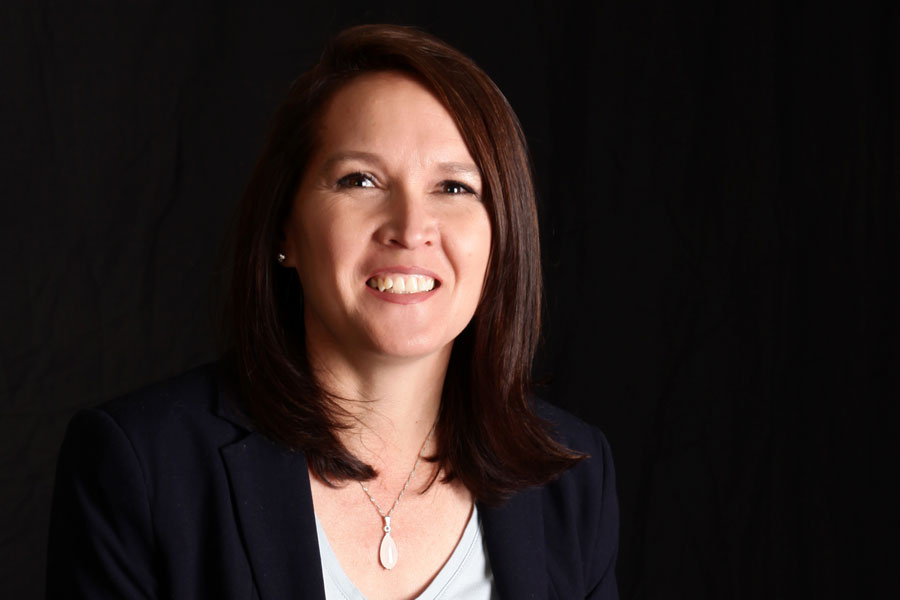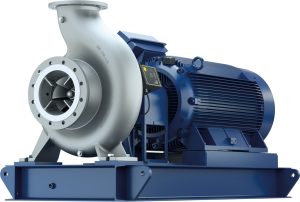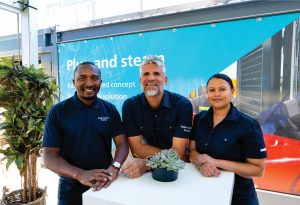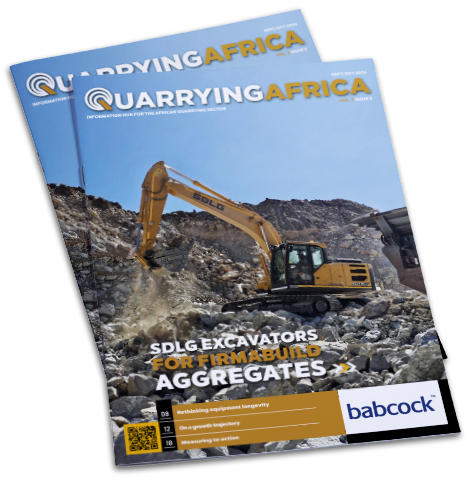Quarries and other small-scale miners play a crucial role in the development of any economy. As well as providing essential construction materials, these operations stimulate local communities through investment and by providing jobs. Yet, in South Africa, they are currently faced with a number of challenges that threaten their existence. The lack of meaningful infrastructure investment in the past 10 years has in particular presented a major economic hurdle for the industry.
In addition to tough economic challenges, small-scale miners have to grapple with their legislative obligations. Compliance by its very nature costs money, and a lot of it, which is why Van den Berg has set her sights on providing small-scale miners with cost-effective solutions to comply.
Her passion for the small-scale mining industry is not only rooted in her 25-year experience in the quarrying industry, but also in the fact that she kick-started her decorated career at a small AfriSam (then Alpha Cement) aggregate and readymix operation back in 1998.
“I started out as an admin clerk at an operation in KwaZulu-Natal. In this role, I was more of a ‘jack of all trades’, which exposed me to the various functions on site, all the way from technical and plant maintenance to cost management, and everything in between,” she says. “Managing costs for such a small operation was particularly critical, and we successfully found ways to comply within our limited means. That’s where my passion for small-scale miners stems from because I have first-hand experience of how things work in their world.”
However, from the onset, Van den Berg had a great passion for health and safety. In 2003, she moved to AfriSam’s Verulam Quarry, where she was granted her wish to focus on health and safety, and the rest is history. Two years later, she was appointed AfriSam’s regional safety practitioner for KwaZulu-Natal, before she assumed the role of group health and safety manager for the company’s Construction Materials Division in 2010.
After 17 years at AfriSam, she moved to Afrimat in 2017, where she was appointed group health and safety executive, a role she held until her recent appointment as the director of ASPASA in January this year.
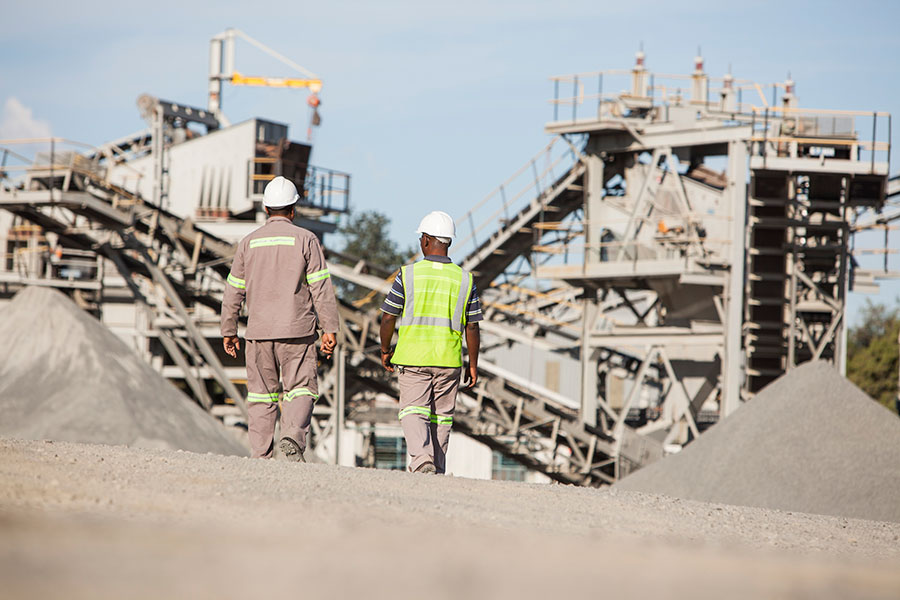
Health and safety
Leveraging her wealth of health and safety management experience, Van den Berg is determined to further accelerate the industry’s drive for zero harm. While ASPASA members have achieved a remarkable seven-year fatality-free feat, she believes that a lot more can be done to eliminate accidents and injuries on sites.
“We cannot deny the fact that our industry works in a potentially dangerous environment. However, having been in the industry for so long, I understand the reasons behind some of the injuries we still record at our member operations. One of my immediate objectives is to find ways to curb these injuries, which is key to our quest to achieve zero harm,” she says.
On the health and safety front, Van den Berg’s tenure at ASPASA coincides with the recent gazetting of the Collision Avoidance Systems (CAS) regulations by the Department of Mineral Resources and Energy (DMRE).
During the Zero Harm Forum of the Minerals Council South Africa (MINCOSA) in October 2022, the chief inspector of mines (CIOM) expressed his concerns about trackless mobile machinery (TMM)- related fatalities and the slow implementation of collision avoidance systems. He consequently requested for the technology readiness date of December 2023 to be pushed forward to January 2023. At the Mine Health Safety Council summit last year, organised labour also advocated for early technology implementation.
In late 2022, MINCOSA met with the TMM technical team and offered reasons why this was not practical. However, the 17 TMM-related fatalities at both surface and underground operations did not help the industry’s case, says Van den Berg. On December 6, 2022, the Minister of Mineral Resources and Energy subsequently signed an order for sub-regulations 8.10.1.2 (b) and 8.10.2.1 (b) in Chapter 8 of the Mine Health and Safety Act, 1996, to come into force.
However, advises Van den Berg, operations can ask for exemption from all or part of the requirements of the Act. The Act gives provision that mines may request an exemption from the Minister. If satisfied that the employer has consulted appropriately with the affected employees or their representatives, the Minister may exempt the employer from any or all of the provisions of the Act or from a notice or instruction under this Act.
“If any mine owner decides to go the exemption route, firstly it is important to explain how they are going to manage the ‘significant risk’ on site – that is principal,” she says. “Then they also need to provide the basis or references upon which past and future CPS ecosystems are based on. These include traffic management processes, TMM fleet size, competencies of operators and an explanation of their environment (production throughput, blasting frequency, tonnes moved and employee complement).”
“The motivation for exemption can also include issues such as skills shortage and the prohibitive costs of installing CAS systems at small surface mining operations. The motivation, however, should be based on how the operation is going to reduce significant risk, citing tasks that have been completed to date and those in the process of being implemented,” she adds.
Based on feedback from multiple industry stakeholders and those in the legal field, ASPASA has determined several options for its members. “Firstly, members can engage with the DMRE regarding the way forward in their respective regions. We have already spoken to the DMRE in various regions, and some have indicated that there is a three-month window for implementation, as with any other Code of Practice that is gazetted,” she says. “Others have indicated that they are waiting for the head office to give guidance. We are of the view that the department must first determine how this legislation will be enforced,” she says.
Another option is to engage with OEMs on the technology, its availability and warranties. Mines can also apply for an exemption from the requirements of the Act. “Operations should use this time to reassess their risk-based approach and confirm that no CAS installation is required as reasonably practicable measures have been implemented and no significant risk to persons exists in terms of diesel/diesel collisions. It is also critical to keep documented proof of the process to present to the DMRE if required,” says Van den Berg.
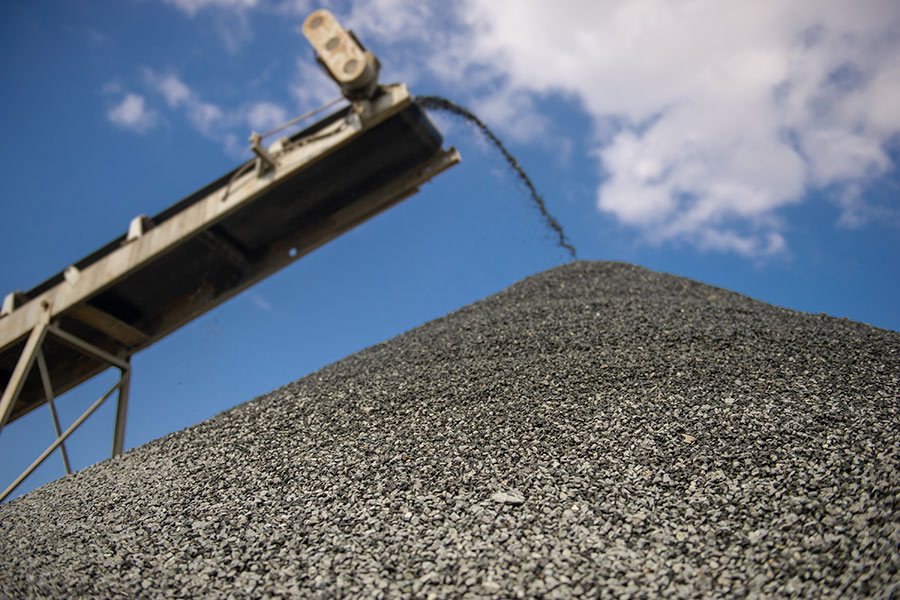
Environmental compliance
Under Van den Berg’s leadership, ASPASA will further cast the spotlight on environmental compliance, which in her view will grow in importance to even surpass safety in the near future. “We cannot deny the growing focus on Environmental, Social and Governance (ESG) in the mining sector. It is, however, still a concept that fits into the global environmental plan, but not everything has been legislated yet, but one can see that it’s coming,” she says.
The lack of environmental compliance, she says, can have dire consequences for operations. “Remember it is one of the key aspects that can lead to the revoking of a mining licence. In my view, it is as important as safety management, but not everybody understands that. To provide context, there are mining CEOs who are in jail and some who have paid up to R5-million fines related to the environment.”
One of Van den Berg’s first initiatives in December 2022, well before she even officially started her tenure, was to run a survey to gauge ASPASA members’ sentiment on the growing importance of environmental compliance.
“They all rated their safety and environmental audits highly, but have also asked the association to close some compliance gaps. We will compile all the gaps and see how we can support our members,” she says.
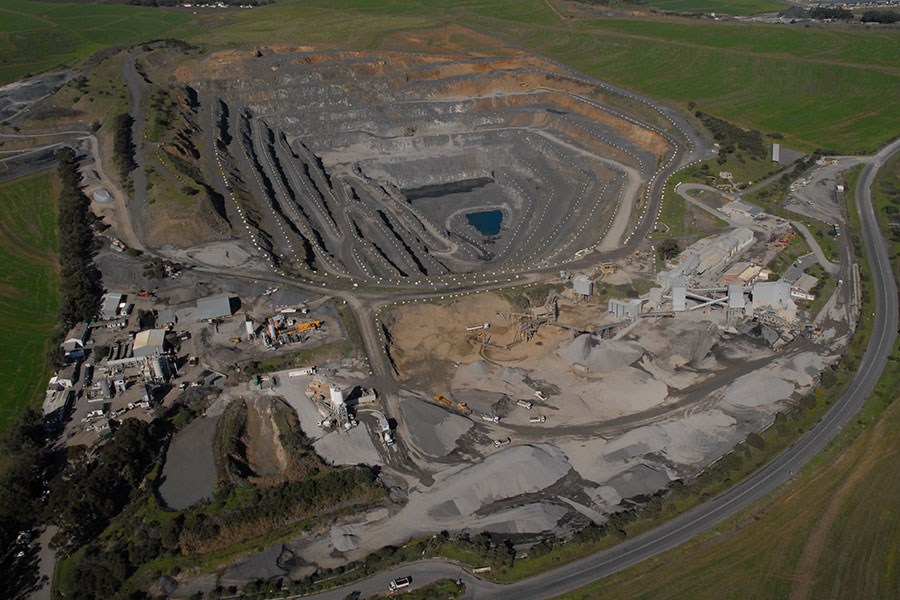
Easing the economic burden
Owing to South Africa’s poor economic performance and a struggling construction industry, the quarrying sector has been under severe pressure over the past few years. “We cannot downplay the economic situation and its impact on our members,” she says. “As an association, we have looked at various ways to help small surface mines to comply in a cost-effective manner.”
To help ease the burden of economic challenges, Van den Berg has implemented a levy structure change, which at the time of writing, was awaiting approval by the association’s management committee (MANCOM).
“As we continue to identify a few roofs that we can take off to unlock further cost benefits for our members, we believe this new levy structure will be a welcome relief for an industry that is reeling from the current economic burden,” she says.
Another key focus area for Van den Berg and her team is the issue of royalties. Over the years, payment of royalties has been a hotly contested issue among quarry owners and operators as to where the value of a mined product needs to be determined in order to calculate exact payments.
The industry’s dispute with the South African Revenue Services (SARS) exists over the first point of sale at which the value of royalties needs to be calculated. The ‘taxman’ argues that royalties should be calculated from the stockpile, while the industry insists that it should be from the muckpile.
“We are busy exploring ways to join forces with other industry bodies on the royalties battle for small-scale miners. If successful, that will offer another economic benefit for members,” she adds.
Skills shortage
Skills development is another area of critical importance for Van den Berg. She acknowledges that the current skills shortage, exacerbated by the brain drain, is a major challenge, not only for the quarrying industry, but for the mining sector at large. This is particularly hostile to business growth.
To help the industry close the skills gap, ASPASA has taken a decision to work closely with the Institute of Quarrying Southern Africa (IQSA).
“One of the first decisions we made was to re-establish our collaboration with IQSA. We are handing over the whole training leg of our service wheel to IQSA. We are therefore looking for a young, dynamic professional to run the training department. We are also looking at starting a mentorship programme. I believe we have some brilliant people within ASPASA who can drive this forward,” she says.
Other initiatives
To further enable action on the ground, ASPASA is creating a new level within its setup. Traditionally, there has been the MANCOM and the director. “We are bringing in a new level called Steercom, which is basically a regional chairperson per region,” she says.
In addition, the association has reviewed its service wheel, based on the survey Van den Berg conducted in December. This, she says, will help realign the association’s service offering with industry needs. “We have hit the ground running, with a couple of initiatives already achieved since the start of the year. We look forward to further providing immense value for our members,” concludes Van den Berg.
